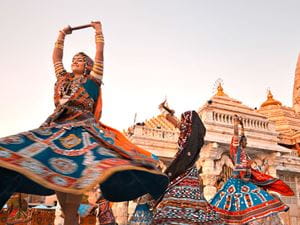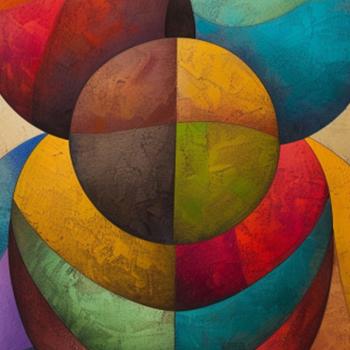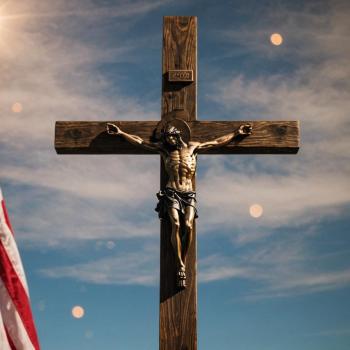
While many non-Hindus are at least vaguely familiar with Diwali, the Hindu “festival of lights” (in which practitioners illuminate their homes with lights, exchange gifts, don festive clothing, and celebrate in ways which feel significantly like Christmas), very few Westerners are familiar with Navaratri—even though the latter of these two holidays is a much more important holiday in Hinduism.
Technically, there are four Navaratri seasonal festivals (Ashada, Chaitra, Magha, and Sharada), though, when Hindus speak of “Navaratri,” that typically has reference to “Sharada Navaratri”—the post-monsoonal ten-day and nine-night festival which is commemorated each fall (usually in September or October).
Sharada Navaratri primarily honors the Hindu goddess (or devī), called Durga—one of the most popular of female Hindu deities, commonly associated with motherhood, but also with protection, and combating anything which risks disrupting prosperity and peace (including demonic forces and darkness). According to one version of the legend, the goddess Durga is said to have participated in a battle against the demon of egotism—a battle which lasted nine days and nights. Durga won the battle and evil was banished. Thus, on this auspicious occasion, practitioners commemorate that great battle and their anticipation of the day when all evil will ultimately cease.
This holiday is sometimes called “Durga Puja,” which basically means the “worship [or ‘puja’] of Durga.” During this nine-night holiday, the various avatars of the goddess Durga (i.e., Shailaputri, Brahmacharini, Chandraghanta, Kushmanda, Skandamata, Katyayani, Kaalratri, Mahagauri, and Siddhidatri.) are individually honored or venerated—each day focusing on the worship of a different avatar.
While Durga is the traditional focus of this holiday, other Hindu goddesses (e.g., Lakshmi, Parvati, and Saraswati) and other gods (e.g., Ganesha, Kartikeya, and Shiva) are also venerated during this annual celebration—and in various regions of India and in diverse parts of the world.
What this holiday focuses on, and even the way in which it is commemorated, really depends on what part of the world the celebrant lives in. While the battle between good and evil is traditionally the focus, how that struggle (and the ultimate triumph of good) is commemorated is not consistent. Local cultures and traditions vary greatly.
One common rite of commemoration, performed in certain areas during this holiday, is to have nine unmarried and virgin girls (who are 9-years of age or less) dress up as the nine avatars of Durga, and then be “worshiped” or treated as manifestations or incarnations of the goddess’s avatars.
The display of certain symbolic colors is common during this nine-day holiday, as well. In decorations and clothing, celebrants will don specific colors on specific days of the festival: Grey (representing vigorous action and the strength of transformation), Orange (associated with energy, happiness, and tranquility), White (implying purity, peace and the value of mediation), Red (highlighting beauty and fearlessness, but sometimes creative power as well), Royal Blue (as a figure of prosperity as well as good health), Yellow (representing happiness, brightness, and sometimes courage), Green (standing for positivity, growth, and new beginnings or reincarnation), Purple (emphasizing the power of the intellect, peace, and the admiration of nature’s beauty), and Peacock Green (standing for the fulfillment of wants or desires of devoted practitioners).
Among Shakti Hindus, animal sacrifices (or symbolic sacrifices and/or vegetable offerings) are sometimes performed on this occasion. This rite is performed, believing that it will inspire Durga to act aggressively toward Mahishasura, the evil, shape-shifting buffalo demon—who wages war on the devas (or celestial beings).
In various Indian states and other countries, commemorations of Navaratri sometimes include fasting (and then feasting), the chanting of mantras (and sacred Hindu texts), recitations of popular legends about the battle between good and evil, engaging in folkdances around a fire or flame (symbolic of the light of the celestial beings), the washing of statues of deities and the destruction of images representing evil. These are but a few of the many rituals and festive acts engaged in (during Navratri) in various parts of the world.
As all, from time to time, will feel the tension of good versus evil in their personal lives, Navratri reminds the practicing Hindu that such challenges are temporary—and God will ultimately overcome all evil, all darkness, and all opposition, in the world and in the lives of those who believe.
3/10/2023 6:18:45 PM










